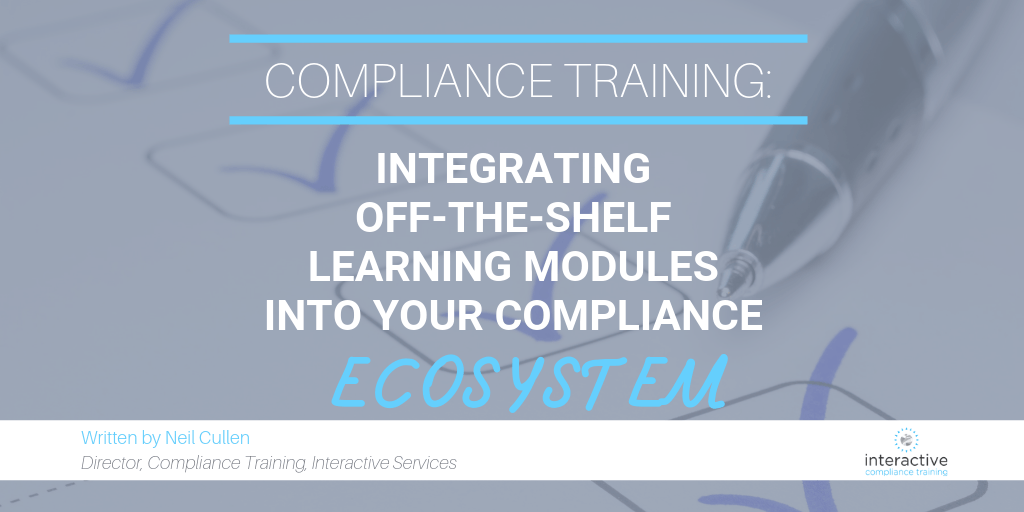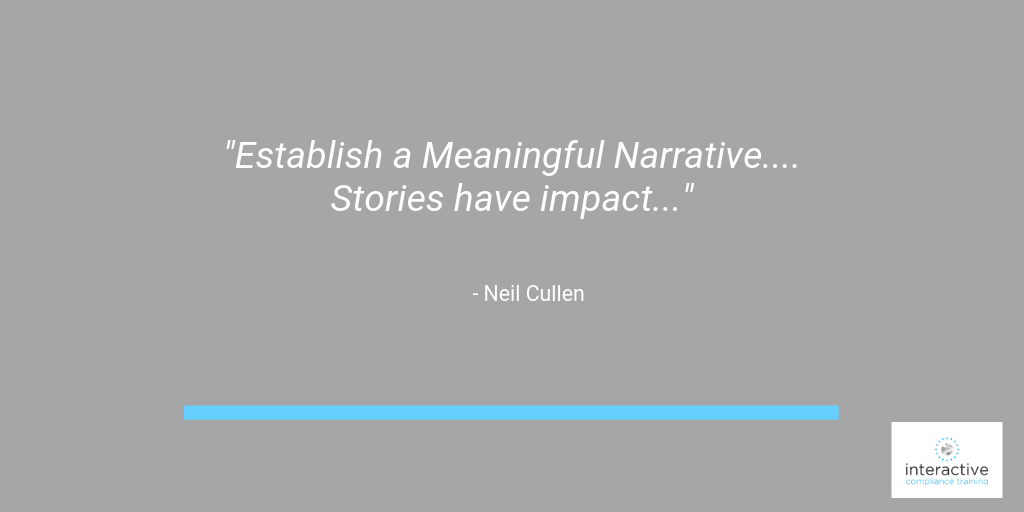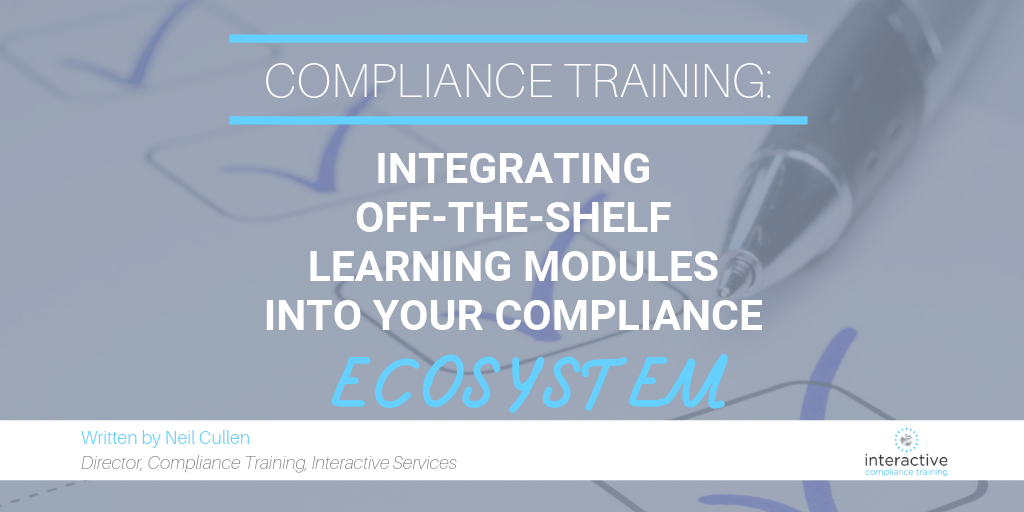
Creating custom, targeted, engaging compliance training does not necessarily mean starting with a blank slate. In fact, you have ample opportunity to customize off-the-shelf learning solutions to meet the needs of your learners, in direct alignment with your organization’s culture.
Perhaps you have an impending need to implement compliance training without the time or expertise to create new content, or without the funding to develop quality interactive learning solutions. As you consider your options, take into account these benefits of using off-the-shelf training modules:
- Learning content has been crafted by industry experts, and approved by appropriate governing bodies.
- Modules can be easily integrated into existing learning management systems, reducing time to implementation.
- Options to immediately track and report on learner interaction and completion are included.
- Ample opportunities are built in to enable customization of the learning experience by adding text, graphics, and video components.
- Learning solution providers take pride in keeping their available compliance training modules current and relevant.
In addition to considering the aforementioned benefits, keep the following approaches in mind as you integrate off-the-shelf compliance modules into your learning ecosystem.
Provide Context Around Existing Content
Off-the-shelf learning modules are characteristically generic on purpose. They are designed to enable customization and contextualization so that we can design and deliver learning experiences in alignment with the goals and culture of our organizations – as well as the needs of our learners. Contextualizing generic compliance content means wrapping perspective around every module, including:
- Adding video introductions from the C-Suite (or a team member) explaining how the module aligns with and supports a culture of compliance.
- Developing introductory paragraphs for each module scenario that explain how the example situation is relevant to current and desired practices and/or behaviors at the organization.
- Including graphics that are recognized throughout the organization, as well as visuals that depict actual business surroundings.
- Supplementing the module with case studies that highlight relevant industry compliance issues.

Establish a Meaningful Narrative
Stories have impact, and taking a narrative approach to compliance training can help you situate off-the-shelf compliance training within the framework of your organization. Part of the contextualization process, establishing a meaningful narrative includes:
- Introducing characters that learners can recognize and relate to by using personas, titles, and roles within the organization.
- Wrapping modules up with short stories that illustrate how the learning supports a culture of compliance within the organization.
- Using emotional hooks based on work-related issues to motivate and inspire your learners to take action.
- Weaving narrative examples of a culture of compliance into supplementary readings, podcasts, and videos.
Facilitate Conversation and Interaction
Another common feature of off-the-shelf training is a focus on content delivery. Some interaction may be built into the modules you acquire, but learning will stick (and behavior will change) when learners become engaged in conversation and interaction. Facilitating conversation and interaction means opening up channels for learners to connect with learning content and each other, including:
- Designing activities for learners to reflect on, and share the impact of compliance training within their specific work situations.
- Providing time for learners to discuss what they are learning within their actual roles in the organization – in moderated online forums or in-person roundtables.
- Making leadership and industry experts available to learners via webinar and in-person sessions.
- Hosting lunch-and-learn sessions on module topics and related compliance issues.
Blend Components into a Learning Ecosystem
Off-the-shelf components can easily be included in the design of a blended learning ecosystem. It takes less time to contextualize content, establish a meaningful narrative, and provide opportunities for conversation and interaction than it takes to design, develop, and deliver a full learning solution.
Purchasing off-the-shelf compliance modules is the first step. Following that, we need to think about what we want learners to do (activities), how we want them to connect, communicate, and collaborate (interactions), and when, where, and how learning has taken place (assessments).
A blended compliance learning ecosystem built around off-the-shelf modules can include online and offline components. Creating situated exercises from module scenarios for learners to experience in the office, adding opportunities for learners to interact in-person, and enabling access to industry expertise are key components of a blend. Other blended approaches include:
- Designing learning roadmaps to guide learners and keep them on track throughout the blended learning journey.
- Creating multiple learning journey options to follow, depending on learner needs and what they have already completed.
- Spacing out modules to allow time for learners to integrate and apply what they have learned.
- Assessing learning continuously throughout the ecosystem, by implementing surveys, quizzes, activities, and challenges.
- Following up with job aids and tip sheets that learners can refer to for performance support in the future.
These approaches enhance the benefits of using off-the-shelf compliance training. Done well, your learners may not even be aware that you have purchased the core content of a blended learning experience.
Keep an eye on off-the-shelf offerings available, and consider how they might fit into your compliance training ecosystem. Remember, you have the unique capacity to contextualize learning content, facilitate conversation and interaction, and use narrative to remind learners of their role in creating a culture of compliance at your organization.
